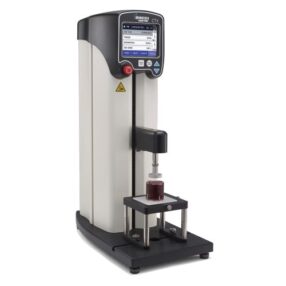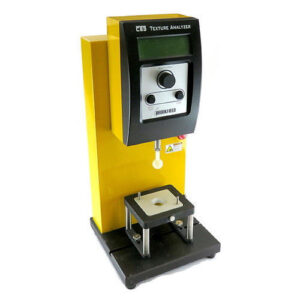Smart LabTech - Your Premier Brookfield Texture Analyzer Suppliers
Brookfield Texture analyzer Suppliers is an important aspect of food quality control and development as it helps ensure that products meet consumers expectations in terms of mouth feel, tenderness, crispness, and other textural attributes. Brookfield Texture analyzers are used to measure properties like hardness, elasticity, adhesiveness, cohesiveness, springiness, gumminess and chewiness of food products commonly used in the food, pharmaceutical, cosmetics, material science and other industries to assess the physical properties of products.
The latest advanced models for analyzing materials for compression and tension are the
CTX & CT3 Brookfield Texture Analyzers.

CTX Texture Analyzer
The latest advanced model for the compression/tension testing of materials is the CTX Brookfield Texture Analyzer. It adds a fascinating new aspect of quick, effective testing
- Eight choices ranging from 100g to 100kg Interchangeable load cells for optimal flexibility
- Easy-to-use intuitive controls & Easy-to-read display
- For testing with greater reaches, an extended boom can travel up to 280mm.
- Availability of three adjustable base tables.
- 21CFR compliant and TexturePro software is optional.

CT3 Texture Analyzer
The CT3 Brookfield Texture Analyzer is designed to provide accurate and repeatable measurements of the physical properties of food products, including their texture, consistency, and firmness.
- Five load categories up to 50kg are available.
- Several different probes and accessories for unique application possibilities
- Six test modes are provided, along with a calibration check.
- Up to 10 more custom test methods are stored
- Choice of two adjustable base tables
Key Features
Versatility : The Brookfield Texture Analyzer can be equipped with various fixtures and probes to accommodate different types of food samples, from liquids and gels to solids and powders.
Rheological Measurements : The Brookfield Texture Analyzer used to determine parameters like yield stress, consistency, spreadability, adhesiveness, and other textural attributes of substances.
Data Collection and Analysis : The Brookfield texture analyzer records data during the test, such as force, distance, and time. This data is then analyzed to provide insights into the textural characteristics of the material being tested.
Applications : The Brookfield texture analyzer finds applications in various industries. For example, in the food industry, it might be used to test the consistency of sauces, creams, or gels. In the cosmetics industry, it could help evaluate the spreadability and feel of lotions or creams.
Customizable Tests : The Brookfield texture analyzer can be used for a wide range of test methods, allowing users to customize the test parameters to suit their specific needs.
Automation and Software : Some models come with automation options to streamline testing processes, and dedicated software allows users to control tests, collect data, and analyze results. It can be used for both manual and automated testing, which can help improve efficiency and consistency in testing procedures.
Quality Control and Research : The Brookfield texture analyzers are used in quality control processes to ensure consistency in product manufacturing, as well as in research and development to understand material behavior and improve formulations.
Common applications of the Brookfield Texture Analyzer include

Food Industry
Testing the texture of various food products like snacks, baked goods, meats, dairy products, and more

Pharmaceutical Industry
Measuring the hardness, dissolution, and disintegration properties of tablets and capsules

Cosmetics Industry
Evaluating the consistency and spreadability of creams, lotions, and gels (Lipstick, Mascara)

Materials Science
Analyzing the mechanical properties of materials like gels, adhesives, and polymers.

Research and Development
Investigating the effects of different formulations, processing methods, and ingredients on the texture and quality of products.
